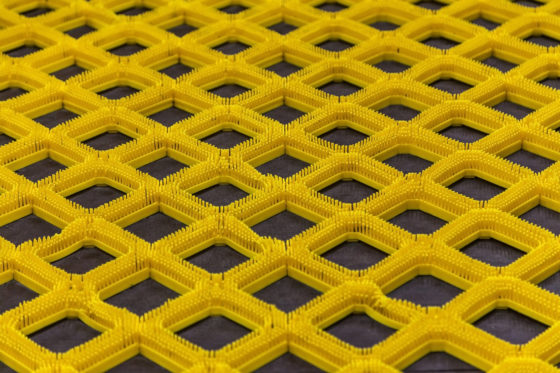Improved slip-resistant mat technology can help prevent fall injuries. Here are things for employers to consider when looking for mats for their workplace.

Photo credit: iStock.com/Alexander Peskov
This is part two of a focus on slips, trips, and falls. Check out last week’s post, Getting a grip on slips and trips in manufacturing.
Each year in B.C., close to 1,000 manufacturing workers are injured from falls, which are often the result of slipping or tripping.
But slips, trips, and falls don’t happen just in manufacturing — employers in all industries need to be aware of how to prevent these injuries. One way is by using slip-resistant mats.
New and improved mat technology
Jose Barranco, a WorkSafeBC industry specialist for manufacturing, shared with me how slip-resistant mat technology has improved in recent years.
“In the past, we saw mats without adequate drainage,” Jose says, describing how people can hydroplane on liquids on mats, just like tires on a wet road. “It happens when there is a very thin layer of water that reduces the friction between the footwear and the mat to a very minimal amount.”
Now employers have many options for mats with improved drainage. An effective mat stays relatively dry by allowing water to drain through it, Jose says. Today’s anti-slip mats also have rougher surfaces that create better traction. Some have texturized strips, made with materials such as quartz, silica, and epoxy grit.
Mats now also have safer edges than in the past. Their edges are bevelled or tapered to the floor, which prevents tripping. And in some cases the edges of mats are a different colour, which makes them more visible.
What’s the best non-slip mat for your workplace?
To determine the best slip-resistant mat for their workplace, Jose says, employers need to review their processes and consider what ends up on the floor. Is it water, grease, or a solid substance (like flour) that clumps and becomes slippery? Is it granular material (like grains), which can roll underfoot like miniature marbles?
Different situations call for different solutions — and not all mats are created equal. Says Jose: “Lots of mats are marketed as slip-resistant and might have the drainage and other features, but would not make the cut as a specialized slip-resistant option.”
Jose says it’s a good idea for employers to ask suppliers about the COF of their mats. “COF” stands for “coefficient of friction,” a technical term that describes how much slip-resistance a particular type of flooring has. Generally speaking, an adequate COF is 0.5, but some workplaces will require a higher level. He adds: “If the supplier doesn’t know the COF, that’s a big red flag.”
For more information on this topic, see these resources:
- Top 5 types of slip-resistant flooring for the workplace (Canadian Occupational Safety article)
- Manufacturing safety: Preventing slips, trips, and falls (WorkSafeBC poster)
- Slips, trips, and falls in manufacturing (WorkSafeBC safety bulletin)
Thanks to Jose for talking with me.


